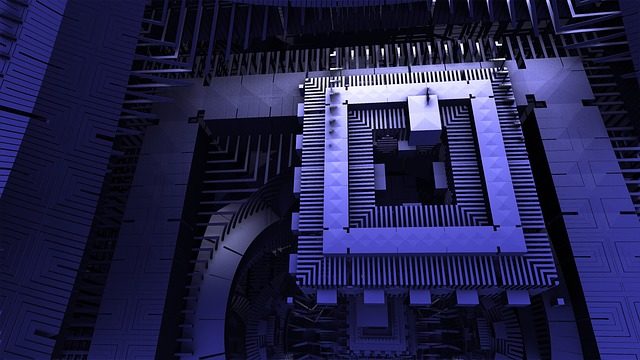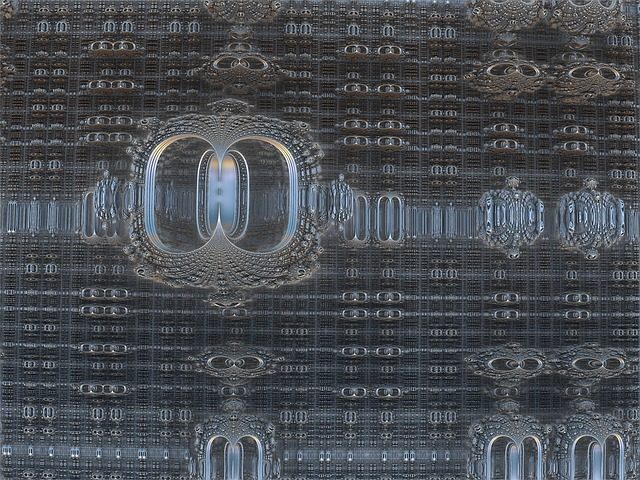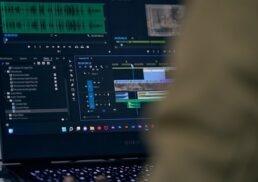Imagine a world where complex problems in finance, logistics, and drug discovery can be solved in mere seconds. A world where the potential of artificial intelligence is unlocked, and climate change can be mitigated through efficient carbon capture. This is the world quantum computing promises to deliver. As we dive into the realm of quantum computing, we will uncover the fundamental principles, hardware, applications, challenges, and future developments that hold the key to unlocking its potential.
Table of Contents
Key Takeaways
Quantum computing utilizes quantum physics to provide faster and more efficient problem-solving than classical computers.
Qubits are the essential components of quantum computing that enable multiple states to exist in superposition, unlocking its immense potential.
Industry investments and collaborations are driving innovation for hardware advancements, cloud services, and applications such as optimization algorithms, molecular simulations, cryptography & security.
The Fundamentals of Quantum Computing

Quantum computing, a branch of computer science, represents a paradigm shift in the way we process information. While classical computers rely on bits that exist in binary states (either 0 or 1), quantum computers harness the power of quantum physics to perform complex calculations, offering faster and more efficient problem-solving than a classical computer.
At the heart of this revolution lie two key features of quantum theory: superposition and entanglement. But how do these principles translate into tangible quantum computing hardware and technologies? Researchers are currently exploring various types of quantum processors, such as gate-based ion trap processors, superconducting processors, and neutral atom and Rydberg atom processors.
With the potential to decrypt encrypted data in a matter of hours, these advanced quantum technologies could render existing cryptosystems vulnerable.
Qubits: The Building Blocks
Qubits are the fundamental units of quantum computation, allowing quantum computers to process vast amounts of information. Unlike classical bits that exist in a binary state, qubits enable multiple states to be held in superposition, providing a quantum advantage over classical computers. This simultaneous existence of states allows quantum computers to perform calculations at an unparalleled speed, tackling complex problems that would take classical computers an inordinate amount of time to solve.
As the basic building blocks of quantum computing, quantum bits are instrumental in harnessing the power of quantum phenomena. Comprehending the role of qubits in quantum computing sets us on a path to unleash the enormous potential of this groundbreaking technology.
Superposition: Powering Parallelism
Superposition is a cornerstone of quantum computing, allowing qubits to exist in multiple states simultaneously. This unique property enables parallel computations, augmenting the potency of quantum computers and empowering them to execute complex quantum algorithms.
Tapping into the power of superposition paves the way to unlock the true potential of quantum computing. As the field of quantum computing continues to evolve, superposition will remain a critical component in the development of more powerful and efficient quantum algorithms.
Entanglement: Boosting Computational Power
Entanglement is another key concept in quantum computing, occurring when pairs of qubits exist in a single state, and altering one qubit directly influences the other in a predictable manner. This phenomenon allows for an exponential increase in computing power, providing a significant advantage over classical computers. Linked qubits use the interference between their wave-like quantum states to computing calculations. This would take millions of years to do without them.
Entanglement propels quantum computing to new heights, connecting qubits and exponentially increasing computational power. As our understanding of quantum entanglement deepens, we can begin to unlock the true potential of quantum computing and revolutionize the way we solve complex problems.
Quantum Computing Hardware and Technologies

The physical components and technologies employed in the construction and operation of quantum computers include qubits (quantum bits) and QPUs (quantum processing units). These structural elements serve as the foundation for quantum computing hardware, which is actively being developed by companies such as Google, IBM, Amazon, IonQ, and QCI.
In this section, we’ll explore three primary types of quantum processors: gate-based ion trap processors, superconducting processors, and neutral atom and Rydberg atom processors. Each type of quantum processor has its unique properties and capabilities, offering different approaches to quantum computing. A thorough examination of these diverse technologies affords a comprehensive understanding of the current state of quantum computing hardware, along with the challenges and opportunities on the horizon.
Gate-Based Ion Trap Processors
Gate-based ion trap processors implement quantum gates using trapped ions and lasers to manipulate the electronic state of the ion in a precise manner. Quantum gates are applied by utilizing lasers to manipulate the electronic state of the ion. Trapped ion qubits employ atoms that are sourced from nature, rather than being produced synthetically, providing a stable and scalable approach to quantum computing.
A sound grasp of the principles of gate-based ion trap processors elucidates how trapped ions and lasers can be utilized to implement quantum gates. As this technology continues to evolve, it holds the potential to play a significant role in the future of quantum computing.
Superconducting Processors
Superconducting processors are a unique type of quantum computer that utilize superconducting circuits to store and process information. Operating at cryogenic temperatures, these processors provide high-speed and low-energy operations.
Some key features of superconducting processors include:
Utilization of superconducting qubits, which are constructed with superconducting electric circuits
Distinct approach to quantum computing
Potential for scalability and error correction
Superconducting processors offer promising advancements in the field of quantum computing.
The use of superconducting qubits in electronic circuits operating at cryogenic temperatures allows for high-speed and low-energy operations, making superconducting processors a promising technology in the field of quantum computing. As research and development continue to advance, superconducting processors hold the potential to revolutionize the way we approach complex problems and computations.
Neutral Atom and Rydberg Atom Processors
Neutral atom processors and Rydberg atom processors are platforms for quantum computing that utilize neutral atoms as qubits. In a neutral atom processor, atoms are initially heated to a gaseous state and then manipulated using lasers to generate quantum states and execute quantum operations. Rydberg atom processors specifically involve exciting atoms to a high-energy state known as a Rydberg state, which allows for extended range interactions between atoms and facilitates quantum information transfer and entanglement. These platforms offer the potential for large arrays of qubits and optically accessible qubit arrays, making them prospective candidates for quantum computing.
Exploring the capabilities of neutral atom and Rydberg atom processors provides insight into the potential of these quantum computing platforms. Their unique properties, such as strong, controllable atomic interactions, hold the potential to shape the future of quantum computing and expand our understanding of quantum phenomena.
Quantum Algorithms and Applications
Quantum computing has numerous applications, including optimization algorithms, molecular simulations, and cryptography, with significant potential benefits across various industries. Quantum algorithms are specifically designed to be executed on quantum computers, taking advantage of the principles of quantum mechanics to achieve more efficient outcomes than classical algorithms. One such quantum algorithm has various applications, including cryptography, optimization, simulation of quantum systems, and solving complex problems.
In this section, we’ll delve into the fascinating world of quantum algorithms and their applications, exploring how they can revolutionize industries and unlock new possibilities.
A careful examination of quantum computing applications starts to reveal the far-reaching impact this technology could have on our world. Some potential benefits of quantum computing include:
Advancements in finance, such as improved risk analysis and portfolio optimization
More efficient logistics and supply chain management
Accelerated drug discovery and development
Enhanced climate modeling and prediction
Quantum computers could revolutionize various industries with their vast and inspiring potential applications.
Quantum Optimization Algorithms
Quantum optimization algorithms, including multidimensional quantum algorithms, utilize the principles of quantum computing to solve optimization problems, seeking to identify the optimal solution to a given problem by taking advantage of the unique properties of quantum systems. These algorithms offer the possibility of attaining faster and more efficient solutions compared to classical optimization algorithms. They can be utilized to address intricate issues in areas such as finance, logistics, and machine learning, and have the potential to enhance the performance of machine learning algorithms and create novel materials.
Employing quantum optimization algorithms enables industries to solve complex problems and streamline processes in previously unimaginable ways. As these algorithms continue to evolve, they hold the potential to drive innovation and unlock new possibilities across various sectors.
Quantum Simulation and Modeling
Quantum simulation and modeling involve utilizing quantum effects and properties to comprehend and simulate the behavior of quantum systems, permitting us to study and model complex systems at the quantum level. In recent years, researchers have made significant breakthroughs in quantum simulation, such as modeling beryllium hydride, the largest molecule simulated on a quantum computer to date, and simulating a water molecule using quantum computing.
Utilizing quantum simulation and modeling can assist researchers in comprehending intricate molecular structures and procedures, which can result in advancements in drug discovery and materials science.
Continued exploration of quantum simulation and modeling uncovers new possibilities for understanding complex molecular structures and processes. This knowledge holds the potential to drive breakthroughs in drug discovery, materials science, and countless other fields.
Quantum Cryptography and Security
Quantum cryptography is a method of encryption that utilizes the principles of quantum mechanics to guarantee the secure transmission of data. By taking advantage of quantum properties, such as the uncertainty principle and quantum entanglement, quantum cryptography guarantees the confidentiality and integrity of information. The primary benefit of quantum cryptography is that it is based on fundamental physical laws, thereby providing resistance to attacks from quantum computers and offering a heightened level of security compared to conventional encryption methods.
However, quantum cryptography faces challenges and limitations, such as the necessity of specialized hardware and a secure atmosphere for it to be effective. As the field of cybersecurity continues to evolve, quantum cryptography holds the potential to revolutionize secure communication and data protection. Understanding the principles and challenges of quantum cryptography is the key to unlocking new methods for safeguarding our digital world.
Challenges and Limitations of Quantum Computing
While the potential of quantum computing is vast, it is not without its challenges and limitations. Decoherence, error rates, and the need for specialized environments all pose hurdles to the development and implementation of quantum computers.
In this section, we’ll explore these challenges and limitations in detail, providing insight into the obstacles that must be overcome to realize the full potential of quantum computing. A thorough understanding of the challenges and limitations of quantum computing offers a deeper appreciation of this revolutionary technology’s complexity and the hurdles that must be overcome to realize its true potential.
Decoherence: Maintaining Quantum States
Decoherence is a process wherein a quantum system loses its coherence and becomes entangled with its environment, resulting in the disappearance of quantum properties and the manifestation of classical behavior. Decoherence can cause qubits to lose their quantum states, leading to errors in computation. To protect against decoherence, quantum particles can be safeguarded from interference through the use of supercooled refrigerators, insulation, and vacuum chambers.
As we continue to develop quantum computing technologies, it is crucial to understand the challenges posed by decoherence and to develop methods for maintaining quantum states. By addressing these challenges, we can work towards achieving stable and accurate quantum computing systems.
Error Rates and Error Correction
Quantum computers have higher error rates than classical computers due to the fragile nature of quantum states, which can be easily disturbed by external factors such as temperature, noise, and electromagnetic fields. To ensure accurate results, advanced error correction techniques are required, including quantum error rectification codes, quantum error-detecting codes, and quantum error-evading codes. These techniques are utilized to detect and correct errors that occur during data transmission or processing.
Understanding the increased error rates in quantum computers and the advanced error correction techniques required to ensure accurate results is essential for the development and implementation of effective quantum computing systems.
Specialized Environments: Achieving Stability
Quantum computers require specialized environments in order to provide the low temperatures and pressures necessary for maintaining stability and minimizing interference. These environments include nearly no atmospheric pressure, an ambient temperature close to absolute zero (-273°C), and insulation from the earth’s magnetic field.
The primary challenge and limitation associated with specialized environments is the requirement of substantial resources and energy to sustain the required conditions, as well as their susceptibility to external interference.
By understanding the specialized environments required for quantum computing, we can appreciate the challenges and limitations that must be overcome in order to develop stable and accurate quantum computing systems.
The Future of Quantum Computing: Trends and Developments
The future of quantum computing, a subset of quantum technology, is filled with promise and potential. Developments in cloud-based services, industry investments, and hardware advancements all point towards a bright future for this groundbreaking technology.
In this section, we’ll explore the trends and developments shaping the future of quantum computing, and how they will continue to push the boundaries of what is possible in the realm of computation.
Understanding the trends and developments shaping the future of quantum computing provides insight into the potential growth and innovation on the horizon for this revolutionary technology.
For more info, please visit The Future of Quantum Computing
Cloud-Based Quantum Services
Cloud-based quantum services will play a significant role in the future of quantum computing. They allow businesses to access quantum computing power without the need for expensive hardware. Companies such as:
IBM
Microsoft
Amazon
Google
Already provide cloud-based quantum services. This enables organizations, academics, and other users to access quantum computing resources through cloud technology.
As cloud-based quantum services evolve, they are set to foster widespread adoption and experimentation with quantum computing, enabling businesses and researchers to harness the power of this revolutionary technology without significant hardware investments.
Industry Investments and Collaborations
Industry investments and collaborations will be a driving force behind the innovation and development of quantum computing technologies. IBM’s Q Network, a partnership between over one hundred companies and organizations, and Google’s investments in quantum computing research and development are prime examples of how collaboration can drive progress in the field.
These partnerships and investments will continue to push the boundaries of quantum computing capabilities, accelerating the development of quantum technologies and unlocking new possibilities for industries and researchers alike.
Hardware Advancements and Milestones
Hardware advancements and milestones will play a crucial role in the continued development of quantum computing. IBM’s goal of a 1,000-qubit quantum computer by 2023 and Google’s plan to have a quantum computer available by 2029 are just a few examples of the ambitious goals set by industry leaders.
Such milestones persist in pushing the boundaries of quantum computing capabilities, driving innovation, and opening up new avenues for solving complex problems and revolutionizing industries.
Summary
In this blog post, we have explored the fascinating world of quantum computing, delving into the fundamental principles, hardware, applications, challenges, and future developments that hold the key to unlocking its potential. From the basics of qubits and quantum states to the cutting-edge advancements in hardware and cloud-based services, we have gained a comprehensive understanding of the current state of quantum computing and the challenges and opportunities that lie ahead.
As we continue to push the boundaries of what is possible with quantum computing, we can look forward to a future filled with innovation, growth, and the potential to revolutionize industries and solve some of the most complex problems facing our world today. The journey into the quantum realm has only just begun.
Frequently Asked Questions
What does quantum computing actually do?
Quantum computing is an advanced technology that harnesses the laws of quantum mechanics to solve complex problems faster than traditional computers. It uses qubits instead of bits as its basic unit of information and allows for the superposition of ones and zeros in the binary system. This enables the execution of multidimensional quantum algorithms with exponential increases in power as more qubits are added.
What is quantum computing in simple words?
Quantum computing is an area of computer science that uses the principles of quantum mechanics to solve complex problems faster than traditional computers. It involves aspects of physics, mathematics and computer science, and utilizes quantum mechanics to store more information and operate with more efficient algorithms.
Is quantum computing real yet?
Quantum computing is an established reality. While its uses and potential are still developing, quantum computers do exist and are being employed across a variety of industries.
How do qubits differ from classical bits?
Qubits differ from classical bits by allowing multiple states to be maintained simultaneously, thereby enabling quantum computers to process significantly more information than traditional computing systems.
What are the challenges and limitations of quantum computing?
Quantum computing is limited by decoherence, high error rates, and the need for specialized environments to maintain stability, making it difficult to achieve practical applications.









